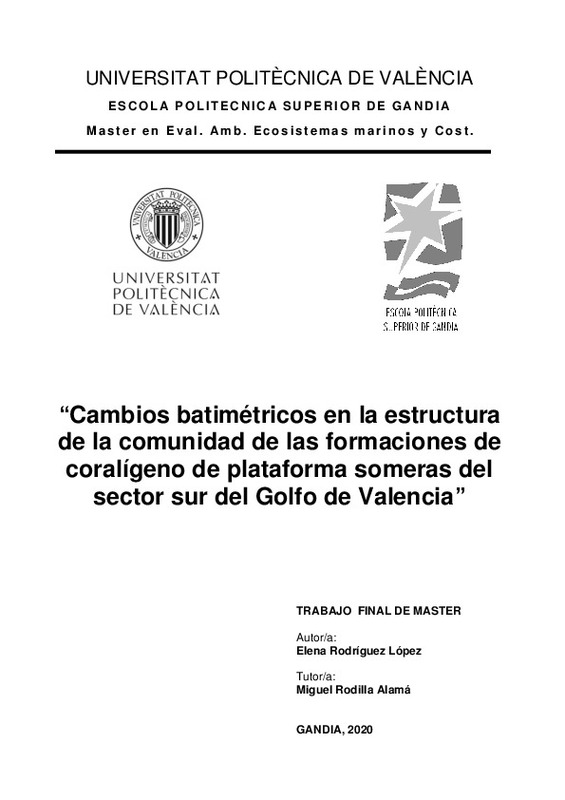JavaScript is disabled for your browser. Some features of this site may not work without it.
Buscar en RiuNet
Listar
Mi cuenta
Estadísticas
Ayuda RiuNet
Admin. UPV
Cambios batimétricos en la estructura de la comunidad de las formaciones de coralígeno de plataforma someras del sector sur del Golfo de Valencia
Mostrar el registro completo del ítem
Rodríguez López, E. (2020). Cambios batimétricos en la estructura de la comunidad de las formaciones de coralígeno de plataforma someras del sector sur del Golfo de Valencia. Universitat Politècnica de València. http://hdl.handle.net/10251/139421
Por favor, use este identificador para citar o enlazar este ítem: http://hdl.handle.net/10251/139421
Ficheros en el ítem
Metadatos del ítem
| Título: | Cambios batimétricos en la estructura de la comunidad de las formaciones de coralígeno de plataforma someras del sector sur del Golfo de Valencia | |||
| Autor: | Rodríguez López, Elena | |||
| Director(es): | ||||
| Entidad UPV: |
|
|||
| Fecha acto/lectura: |
|
|||
| Resumen: |
[EN] The Gulf of Valencia has a typical sandy bottom, which may not stand out for its
ecological biodiversity. However, in some areas we can find biogenic structures formed
by calcareous algae that have a large number ...[+]
[ES] El fondo del Golfo de Valencia típico arenoso, no destaca por su biodiversidad
ecológica. Sin embargo, en algunas zonas podemos encontrar unas estructuras
biogénicas formadas por algas calcáreas que albergan una ...[+]
|
|||
| Palabras clave: |
|
|||
| Derechos de uso: | Reserva de todos los derechos | |||
| Editorial: |
|
|||
| Titulación: |
|
|||
| Tipo: |
|
recommendations
Este ítem aparece en la(s) siguiente(s) colección(ones)
-
EPSG - Trabajos académicos [5004]
Escuela Politécnica Superior de Gandia







